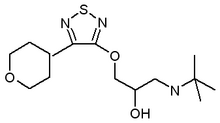"The effectiveness of treatment for glaucoma remains unproved," according to ophthalmologist Louis Clearkin in a letter to the British Medical Journal (19 November 1994). The few published studies show contradictory results. Two indicate that, at best, glaucoma medication will reduce optic nerve damage and visual field loss in some people with elevated intraocular pressure. But the largest study (only 143 participants) with the longest follow-up (only six years) found no difference between untreated people and those taking glaucoma medication (Ophthalmology, 1991; 98:301-307). No study has followed participants long enough to demonstrate that any medication will prevent blindness.
One commonly prescribed glaucoma drug is timolol (some brand names are Timoptic, Blocadren, Timolide). Though taken as eye drops, timolol can have systemic effects, including breathing difficulties, irregular heart rhythm, worsening of congestive heart failure, fatigue, and confusion. The odds of experiencing drug side effects increases with age, but the elderly are more likely to have those effects attributed to aging or an age-related chronic illness. Timolol is a member of the same class of beta-blocker drugs used to treat hypertension and angina. Its systemic effects are clue to its ability to block certain actions of the sympathetic nervous system, such as reducing the rate and contraction force of the heart.
Another commonly prescribed glaucoma drug is pilocarpine (some brand names are Pilocar, Akarpine, Ocusert Pilo-20). This drug promotes drainage of excess eye fluid by directly stimulating constriction of the pupil. Its side effects include painful eye muscle spasm, burning or irritation of the eye, low blood pressure, and irregular heart rhythm.
Three glaucoma drugs--latanoprost, brimonidine tartrate, and dorzolamide--were just approved by the Food and Drug Administration. They were identified as having reduced systemic effects in a recent article in Archives of Internal Medicine (18 February 1998), but the long-term studies that will determine their safety and efficacy have yet to be conducted.
COPYRIGHT 1998 Center for Medical Consumers, Inc.
COPYRIGHT 2000 Gale Group



